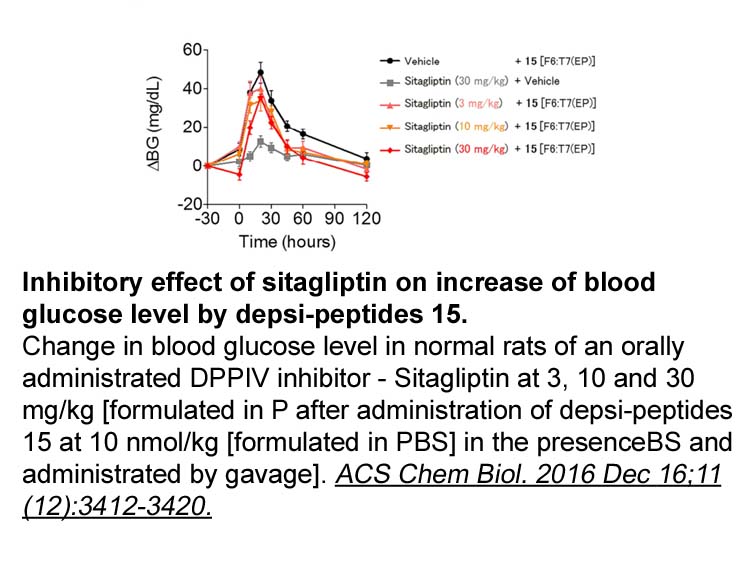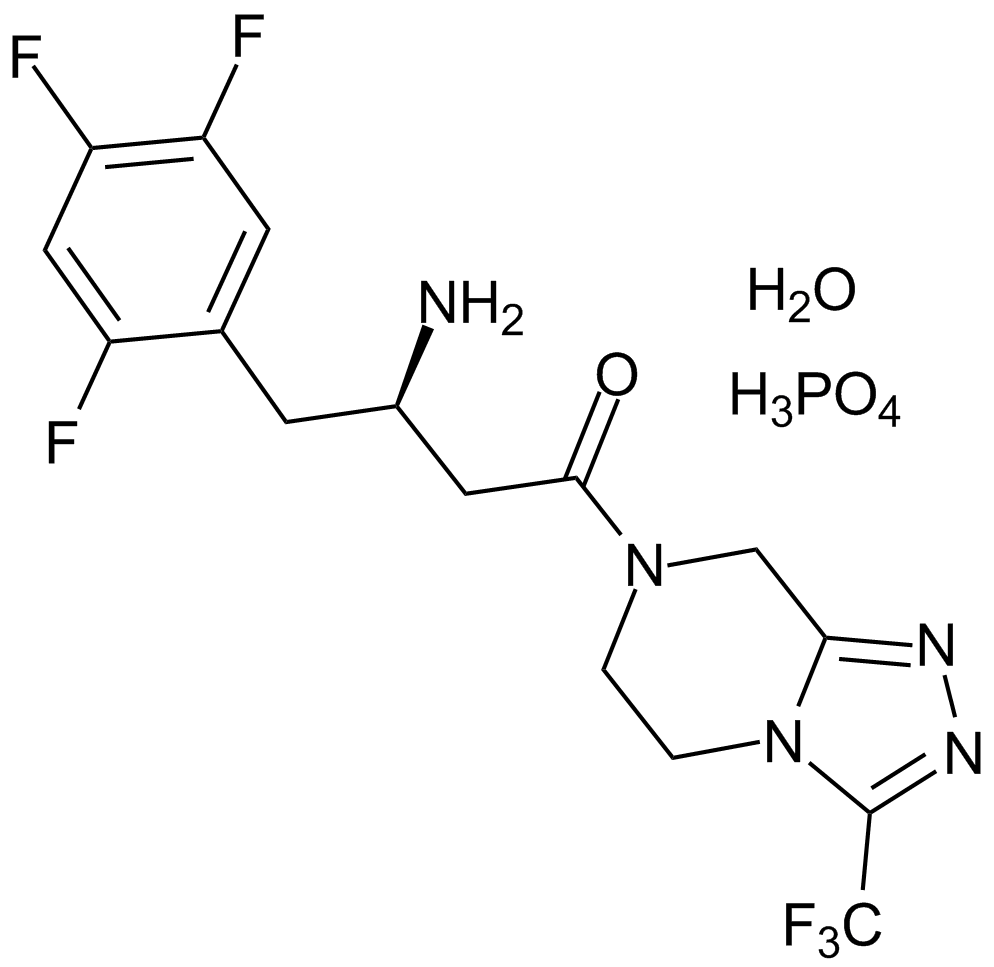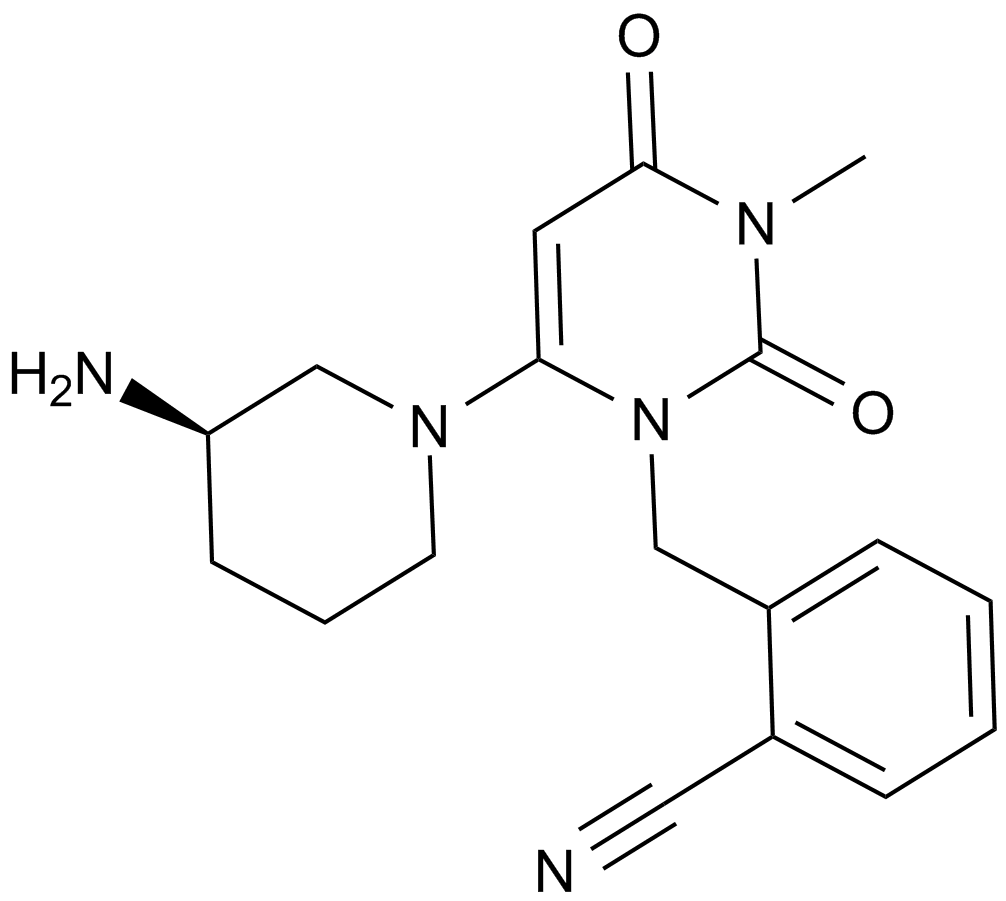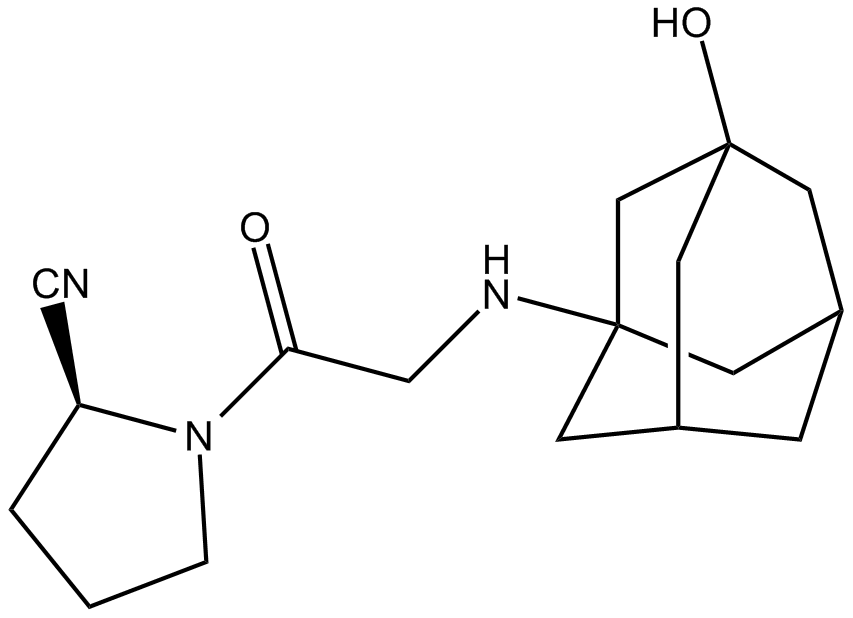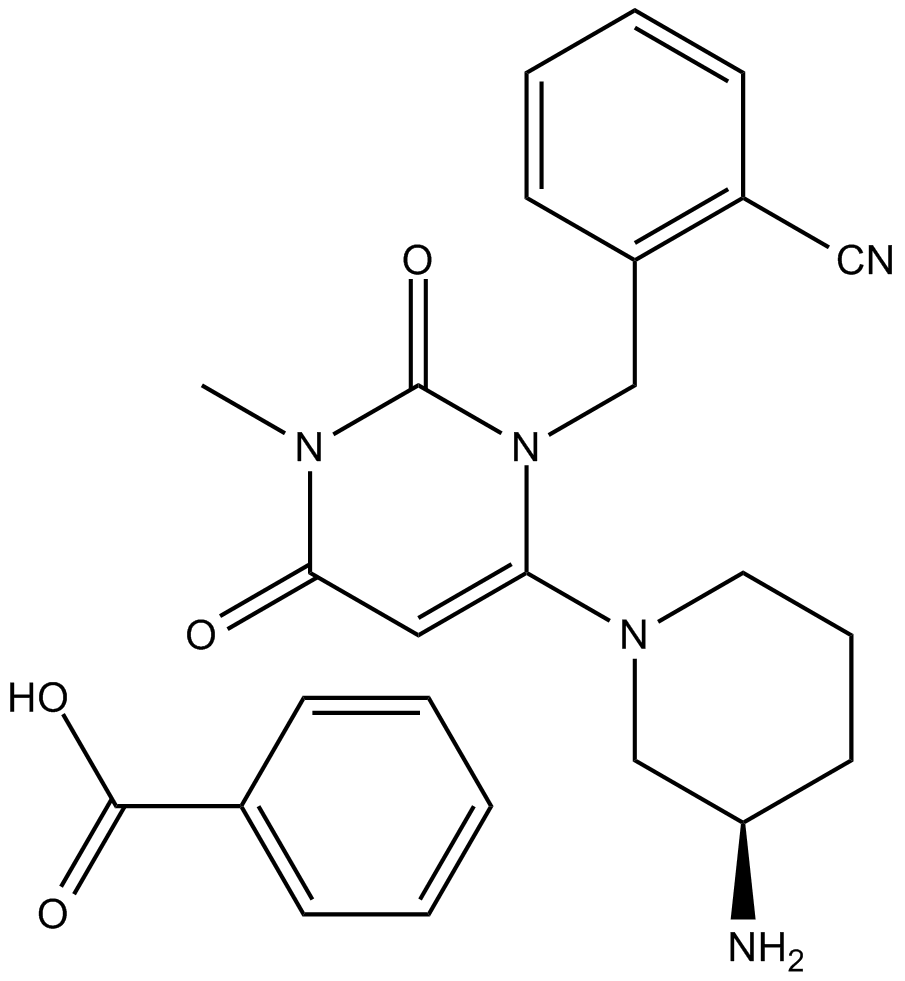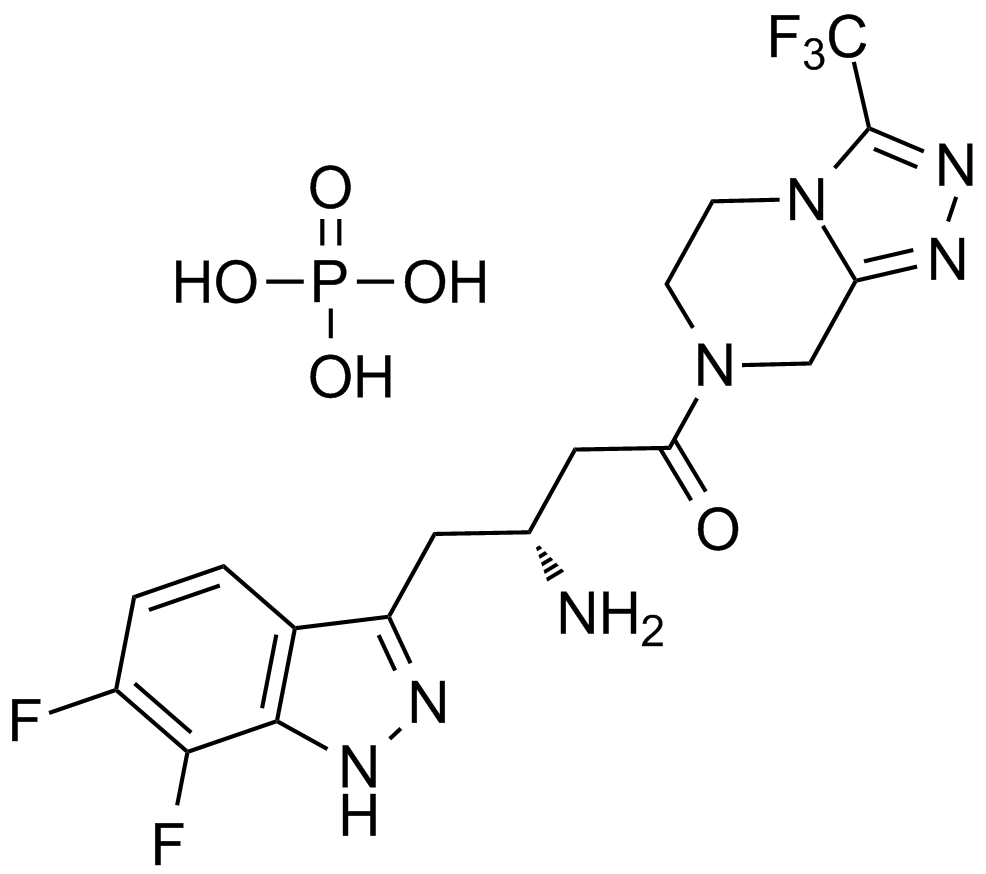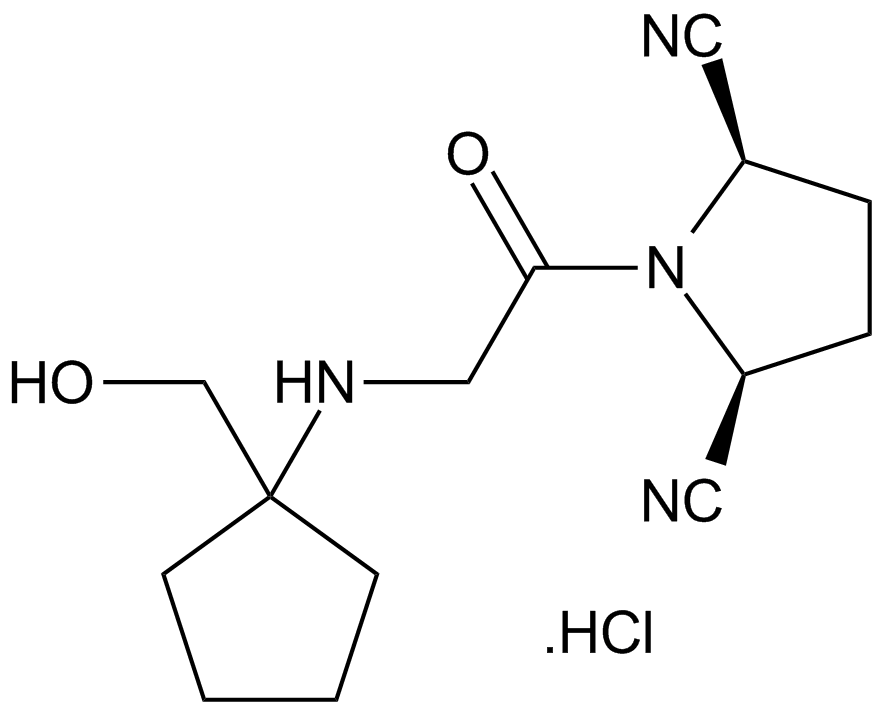Sitagliptin phosphate monohydrate
Sitagliptin phosphate monohydrate is the phosphate salt of its active component, sitagliptin, with one molecule of water. Sitagliptin is a potent inhibitor of dipeptidyl peptidase 4 (DPP-4), an enzyme catalyzing the cleavage of peptides with an N-terminal alanine or proline amino acid residue, that selectively inhibits DPP-4 with 50% inhibition concentration IC50 value of 18 nM and shows no affinity towards other DDP enzymes (such as DDP-8 and DDP-9). The inhibition of DPP4 by sitagliptin has been found to be mediated by increasing levels of two DPP-4 substrates, including glucagon-like peptide-1 (GLP-1) and gastric inhibitory polypeptide (GIP). Sitagliptin is currently being investigated in the treatment of type II diabetes.
Reference
Gallwitz B. Review of sitagliptin phosphate: a novel treatment for type 2 diabetes. Vasc Health Risk Manag. 2007;3(2):203-10.
- 1. McCloskey AG, Miskelly MG, et al. "Antidiabetic actions of GPR55 agonist Abn-CBD and sitagliptin in obese-diabetic high fat fed mice." Biochem Pharmacol 2023 Feb;208 PMID: 36581052
- 2. Craig SL, Gault VA, et al. "Ψ-xenin-6 enhances sitagliptin effectiveness, but does not improve glucose tolerance." J Endocrinol. 2020;245(2):219-230. PMID: 32130206
- 3. McCloskey AG, Miskelly MG, et al. "Pharmacological potential of novel agonists for FFAR4 on islet and enteroendocrine cell function and glucose homeostasis." Eur J Pharm Sci. 2020;142:105104. PMID:31669388
- 4. Mansur SA, Mieczkowska A, et al. "Sitagliptin Alters Bone Composition in High-Fat-Fed Mice." Calcif Tissue Int. 2018 Dec 18. PMID:30564859
- 5. Ghorpade DS, Ozcan L, et al. "Hepatocyte-secreted DPP4 in obesity promotes adipose inflammation and insulin resistance." Nature. 2018 Mar 29;555(7698):673-677. PMID:29562231
- 6. Mroz PA, Perez-Tilve D, et al. "Native Design of Soluble, Aggregation-Resistant Bioactive Peptides: Chemical Evolution of Human Glucagon." ACS Chem Biol. 2016 Dec 16;11(12):3412-3420. PMID:27797473
- 7. Khan D, Vasu S, et al. "Islet distribution of Peptide YY and its regulatory role in primary mouse islets and immortalised rodent and human beta-cell function and survival." Mol Cell Endocrinol. 2016 Jul 25;436:102-113. PMID:27465830
- 8. Gault, V. A., R. Lennox, and P. R. Flatt. "Sitagliptin, a DPP‐4 inhibitor, improves recognition memory, oxidative stress, hippocampal neurogenesis and up‐regulates key genes involved in cognitive decline." Diabetes, Obesity and Metabolism (2015). PMID:25580570
| Physical Appearance | A solid |
| Storage | Store at -20°C |
| M.Wt | 523.3 |
| Cas No. | 654671-77-9 |
| Formula | C16H15F6N5O·H3PO4·H2O |
| Synonyms | Tesavel, MK-0431,MK0431 |
| Solubility | ≥23.8 mg/mL in DMSO; insoluble in EtOH; ≥30.6 mg/mL in H2O with ultrasonic |
| Chemical Name | (3R)-3-amino-1-[3-(trifluoromethyl)-6,8-dihydro-5H-[1,2,4]triazolo[4,3-a]pyrazin-7-yl]-4-(2,4,5-trifluorophenyl)butan-1-one;phosphoric acid;hydrate |
| SDF | Download SDF |
| Canonical SMILES | [HH].C1CN2C(=NN=C2C(F)(F)F)CN1C(=O)CC(CC3=CC(=C(C=C3F)F)F)N.O.OOP(=O)=O |
| Shipping Condition | Small Molecules with Blue Ice, Modified Nucleotides with Dry Ice. |
| General tips | We do not recommend long-term storage for the solution, please use it up soon. |
| Cell experiment [1]: | |
|
Cell lines |
Endothelial progenitor cells (EPCs) and bone marrow mesenchymalstem cells(MSC) |
|
Preparation method |
The solubility of this compound in DMSO is >10 mM. General tips for obtaining a higher concentration: Please warm the tube at 37 °C for 10 minutes and/or shake it in the ultrasonic bath for a while.Stock solution can be stored below -20°C for several months. |
|
Reaction Conditions |
14 d; 25 μmol/L |
|
Applications |
To determine whether sitagliptin treatment participated in enhancing the differentiation of EPCs and MSCs and cells expressing its ligand, SDF-1α, adipose tissues were co-cultured with sitagliptin (25 μmol/L) in M199 culture medium for 14 d and examined by flow cytometric analysis. The results show that compared with the 7 d cell culture, the numbers of EPCs [CD31/Sca-1+(double-stained) and CXCR4+ (single-stained)] were remarkably higher at day 14 in both the non-sitagliptin-treated (Si-T) group and the Si-T group |
| Animal experiment [2]: | |
|
Animal models |
ApoE−/−mice with the C57BL/6 genetic background |
|
Dosage form |
200 mg/kg/day; oral taken |
|
Applications |
In ApoE−/−mice, the sitagliptin group showed fewer atherosclerotic plaques than in controls (7.64±1.98% [range 4.62–10.13%] vs 12.91±1.15% [range 11.55–14.37%], p |
|
Other notes |
Please test the solubility of all compounds indoor, and the actual solubility may slightly differ with the theoretical value. This is caused by an experimental system error and it is normal. |
|
References: [1] Chua S, Sheu J J, Chen Y L, et al. Sitagliptin therapy enhances the number of circulating angiogenic cells and angiogenesis—evaluations< i> in vitroand in the rat critical limb ischemia model[J]. Cytotherapy, 2013, 15(9): 1148-1163. [2] Zeng Y, Li C, Guan M, et al. The DPP-4 inhibitor sitagliptin attenuates the progress of atherosclerosis in apolipoprotein-E-knockout mice via AMPK-and MAPK-dependent mechanisms[J]. Cardiovascular diabetology, 2014, 13(1): 32. |
|
| Description | Sitagliptin phosphate is a potent inhibitor of DPP-IV with IC50 of 19 nM in Caco-2 cell extracts. | |||||
| Targets | DPP-4 | |||||
| IC50 | 19 nM | |||||
Quality Control & MSDS
- View current batch:
Chemical structure
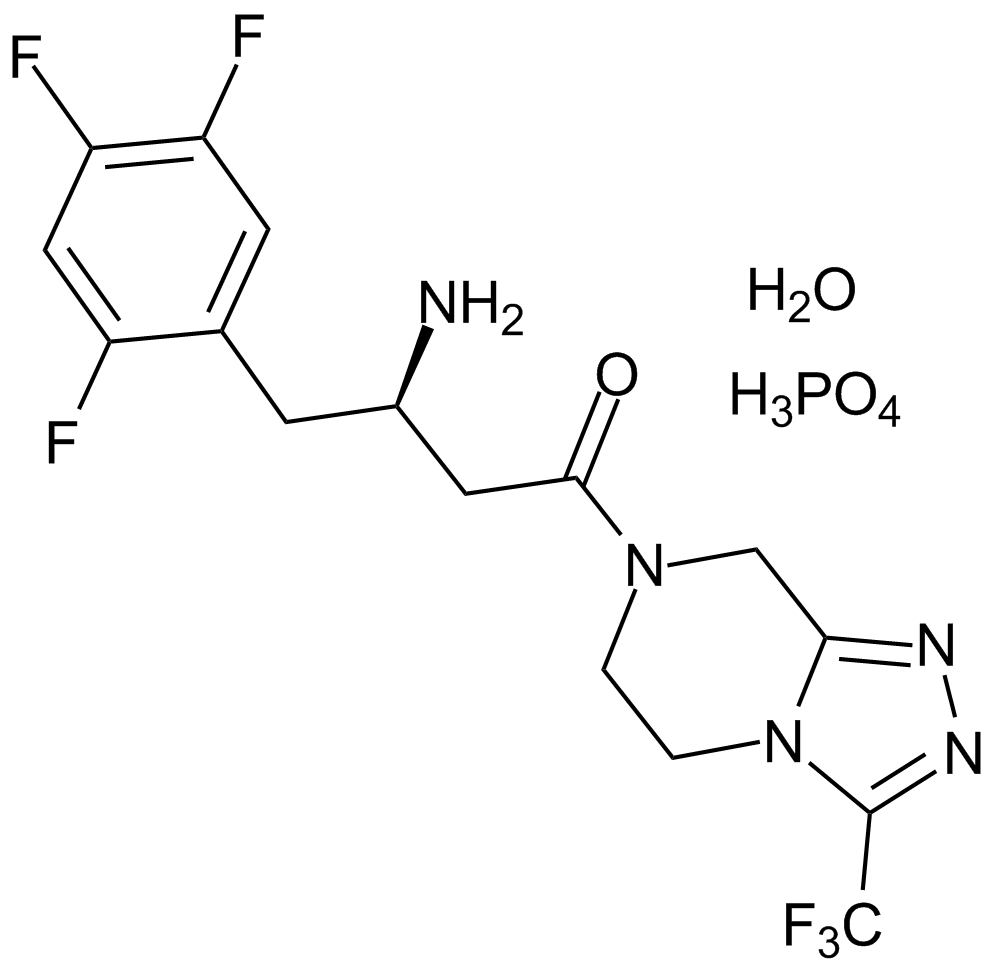
Related Biological Data
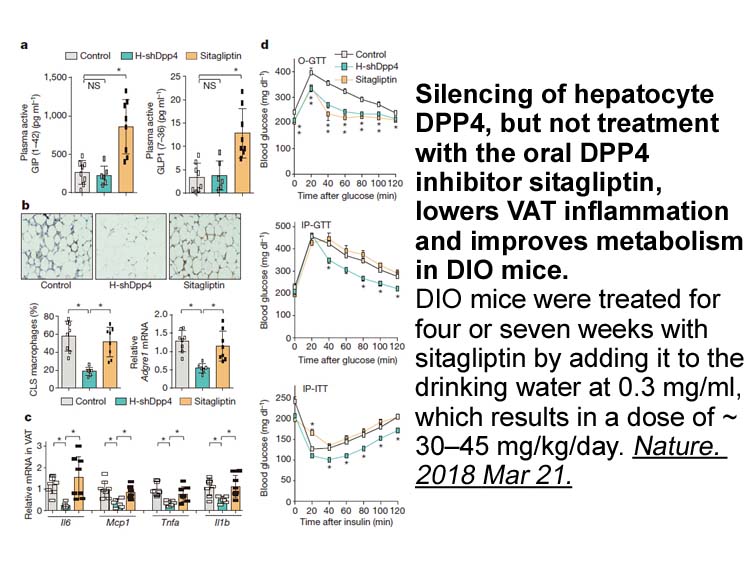
Related Biological Data
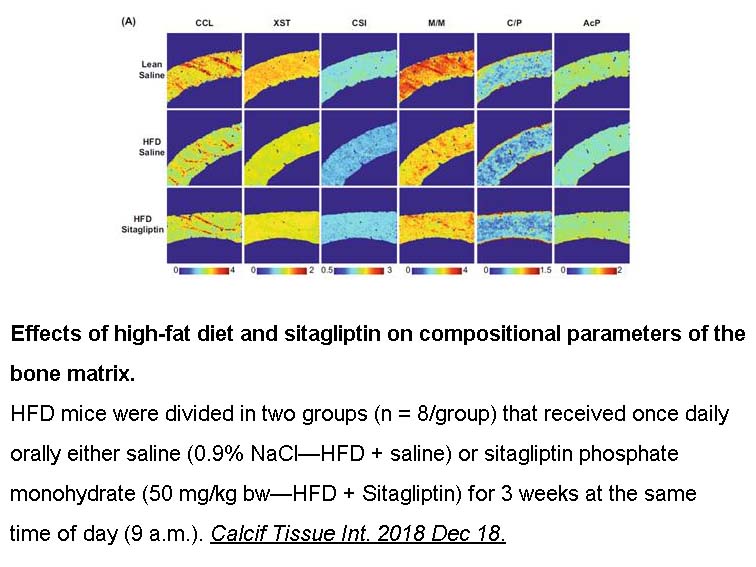
Related Biological Data
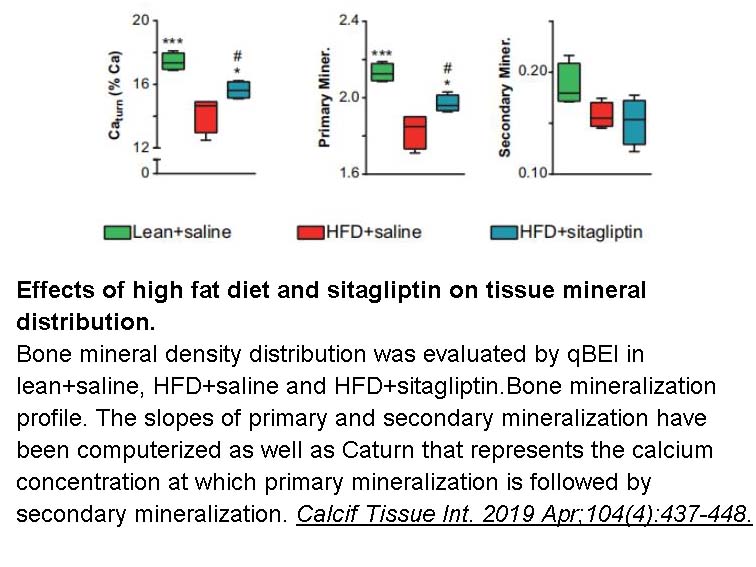
Related Biological Data
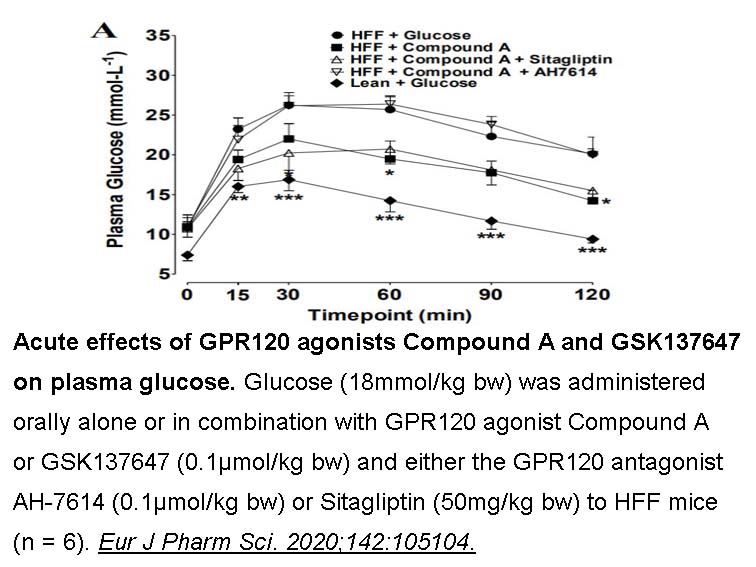
Related Biological Data
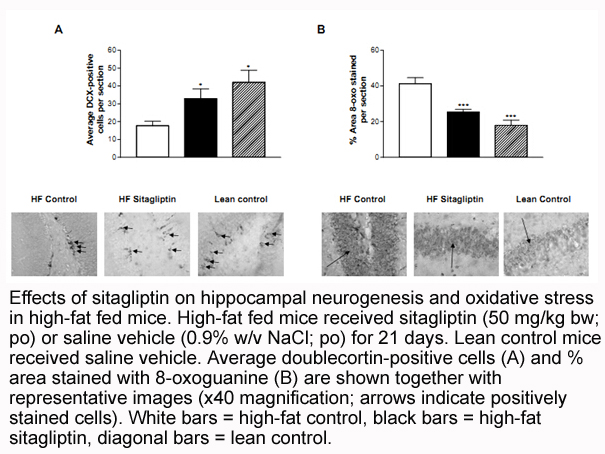
Related Biological Data
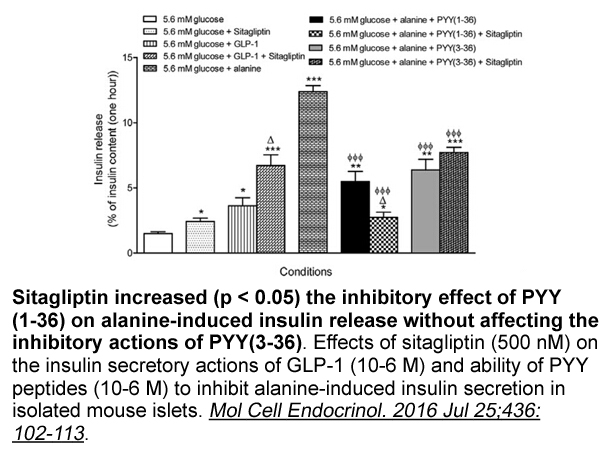
Related Biological Data
